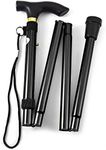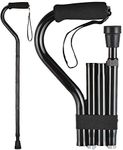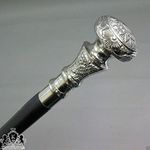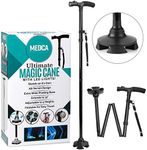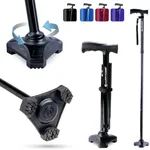Buying Guide for the Best Walking Canes
Choosing the right walking cane is important for both comfort and safety. The best cane for you will depend on your physical needs, lifestyle, and personal preferences. When shopping for a walking cane, it's important to consider how much support you need, where you'll be using it, and how easy it is to handle and transport. Understanding the key features will help you make a confident and informed choice.Cane TypeThe type of cane refers to its basic design, such as standard (single-tip), quad (four-tip), folding, or seat canes. This is important because different types offer varying levels of support and stability. Standard canes are lightweight and easy to maneuver, making them suitable for those who need minimal support. Quad canes have a wider base and provide more stability, which is helpful for people with balance issues. Folding canes are convenient for travel and storage, while seat canes double as a portable seat. To pick the right type, think about your balance, strength, and where you’ll use the cane most often.
Height AdjustabilityHeight adjustability means the cane can be made taller or shorter to fit your body. This is crucial because a cane that is too high or too low can cause discomfort or even lead to falls. Adjustable canes usually have a button or twist mechanism to set the height. Fixed-height canes are cut to size. To find the right height, stand up straight with your arms relaxed at your sides; the cane’s handle should line up with the crease of your wrist. If you’re unsure, an adjustable cane is a safe choice.
Handle DesignThe handle is where you grip the cane, and its design affects comfort and control. Common handle types include crook, derby, and ergonomic. Crook handles are simple and easy to hang on a hook, derby handles offer a comfortable grip and good support, and ergonomic handles are shaped to fit your hand, reducing strain. If you have arthritis or weak hands, an ergonomic handle may be best. Try different handles to see which feels most comfortable for your grip and walking style.
MaterialCanes are made from materials like wood, aluminum, or carbon fiber. The material affects the cane’s weight, strength, and appearance. Wooden canes are sturdy and have a classic look, but they can be heavier and less adjustable. Aluminum canes are lightweight, durable, and often adjustable, making them a popular choice. Carbon fiber canes are very light and strong but may cost more. Choose a material that feels comfortable to carry and matches your need for strength and style.
Tip TypeThe tip is the part of the cane that touches the ground, and its design affects stability and grip. Standard rubber tips are common and provide good traction on most surfaces. Some canes have specialty tips, like pivoting or shock-absorbing tips, for extra stability or comfort. Quad canes have four tips for maximum support. If you walk on uneven or slippery surfaces, look for a cane with a non-slip or specialty tip. Replace worn tips regularly to maintain safety.
Weight CapacityWeight capacity is the maximum weight the cane can safely support. This is important for safety and durability. Canes are rated for different weight limits, usually listed in the product details. Standard canes typically support up to 250-300 pounds, while heavy-duty or bariatric canes can support more. Choose a cane with a weight capacity that comfortably exceeds your body weight for reliable support.

